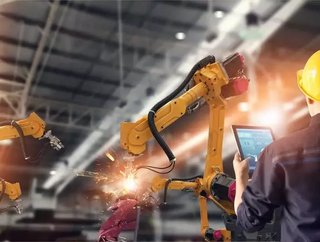IoT in Manufacturing: Reduce Energy Consumption, Increase Safety

It's an exciting time for the manufacturing industry as we recognise the dawn of ‘Industry 4.0’, where advanced manufacturing techniques are being combined with IoT technology.
Interconnected manufacturing systems are communicating with intelligent platforms where data is fed and analysed to drive insight-led action.
Industrial Internet of Things
A subset of IoT is the Industrial Internet of Things (IIoT) which refers to creating interconnections between industrial equipment, facilities, personnel and processes. Sensors can be placed onto individual assets on the factory floor to allow a business to collect sensor-based data from all interlinking machines. Each of these connect to a shared and secure network to give them a three-dimensional picture of the entire operating facility. These sensors monitor a variety of functions such as lighting usage, temperature, humidity and activity levels. The higher volume and quality of data allows a business to manage and monitor operations to ensure the most efficient results.
Increased Safety
An enhanced overview of how systems are operating allows manufacturers to prevent potentially dangerous situations from occurring. One of the ways in which this can be achieved is a predictive maintenance model. As data is collected from each of the machines it is then analysed, producing useful insight into potential failure conditions of equipment before they occur, e.g. overheating.
SEE ALSO:
- Bain & Company: digital manufacturing brings productivity surge
- Capgemini: a 5G roadmap for the manufacturing supply chain
- Can we manage the manufacturing supply chain better?
- Read the latest issue of Supply Chain Digital here!
All the information collected by the sensors is in real-time, so staff can receive immediate alerts whenever a particular asset is operating outside of its safety limits. This reduces the risk of staff injury as a team member will be able to rectify the problem before a failure occurs and it prevents maintenance being performed on a high-risk asset. Recent studies have demonstrated that predictive maintenance will save companies $630 billion by the year 2025, with the majority of cost savings coming from the reduction in unplanned downtime.
Improved Energy Efficiency
Alongside being able to improve safety within a facility, IIoT can also reduce energy usage. The industrial sector is one of the highest energy users accounting for 54% of global delivered electricity. IIoT has the ability to predict energy demands and optimise future energy consumption. Motors and Heating, Ventilation and Air Conditioning (HVAC) systems are major sources of energy usage. When the sensors are placed onto each of these machines it will be able to identify when and where you are losing energy.
Continuously monitoring energy output will allow a business to determine when power should be on and operating and when they can potentially power down and conserve energy. For example, excess heat is just one indicator of wastage. If a machine is operating at a higher temperature than the optimal baseline, it can be rectified immediately before excessive energy wastage occurs. In addition, the excess heat can also be an indicator to a fault within one of the machines and means maintenance can be conducted before the machine breaks down.
IIoT offers unprecedented opportunities for industrial businesses. New pioneering technology can redefine your manufacturing process allowing your business to profit from the benefits demonstrated in this article.
By Jordan Appleson, CEO at Hark
- Dumarey Streamlines Suppliers with BearingPoint and JAGGAERSupplier Relationship Management (SRM)
- Explained: What is the SBTi’s Land Transport Guidance?Sustainability
- Top 100 Women 2024: Taryn Thompson, Bank of America – No. 4Sustainability
- KPMG and ASCM Unveil Latest Supply Chain Stability IndexSupply Chain Risk Management






